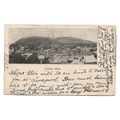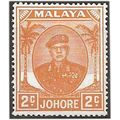Fortingall, Perth & Kinross - village - Colourmaster postcard c.1970s
- Condition : Used
- Dispatch : 2 Days
- Brand : None
- ID# : 180707873
- Quantity : 1 item
- Views : 114
- Location : United Kingdom

- Seller : justthebook (+1713)
- Barcode : None
- Start : Mon 13 May 2019 17:34:52 (EDT)
- Close : Run Until Sold
- Remain : Run Until Sold
Checks/Cheques
 for 1 item(s) edit
for 1 item(s) edit
Shipping Calculator
More Listings from This Seller view all
Seller's Description
- Postcard
- Picture / Image: Fortingall, Perthshire [Perth & Kinross] - village
- Publisher: Colourmaster PT35223 (Photo Precision)
- Postally used: no - message and addressed but not posted
- Stamp: n/a
- Postmark(s): n/a
- Sent to: Colchester
- Notes / condition:
Please ask if you need any other information and I will do the best I can to answer.
Image may be low res for illustrative purposes - if you need a higher definition image then please contact me and I may be able to send one. No cards have been trimmed (unless stated).
------------------------------------------------
Postage & Packing:
Postage and packing charge should be showing for your location (contact if not sure).
No additional charges for more than one postcard. You can buy as many postcards from me as you like and you will just pay the fee above once. Please wait for combined invoice. (If buying postcards with other things such as books, please contact or wait for invoice before paying).
Payment Methods:
UK - PayPal, Cheque (from UK bank) or postal order
Outside UK: PayPal ONLY (unless otherwise stated) please. NO non-UK currency checks or money orders (sorry).
NOTE: All postcards are sent in brand new stiffened envelopes which I have bought for the task. These are specially made to protect postcards and you may be able to re-use them. In addition there are other costs to sending so the above charge is not just for the stamp!
I will give a full refund if you are not fully satisfied with the postcard.
----------------------------------------------
Text from the free encyclopedia WIKIPEDIA may appear below to give a little background information (internal links may not work) :
*************
Fortingall is a small village in highland Perthshire, Scotland, in Glen Lyon.[1] Its nearest sizable neighbours are Aberfeldy and Kenmore. Its Gaelic name is Fartairchill, which may be translated as something like: "Escarpment Church", i.e. "church at the foot of an escarpment or steep slope".
According to legend it was the birthplace of Pontius Pilate who was born well before the Roman conquest. A number of other locations, including villages in Spain and Germany, make similar claims. It is also famous for its churchyard yew tree that is said to be the oldest living thing in Europe, approximately 5000 years old.
The parish church is on an early Christian site, dedicated to Coeddi, bishop of Iona (died 712), probably founded about 700 AD from Iona itself as a daughter monastery. Though undocumented, crop-marks of surrounding ditched enclosures have been identified from the air, and the church's unusual dedication and fragments of several finely carved cross-slabs preserved in the church all point to an early origin as a major church site. Also preserved in an alcove in the church is an early hand-bell in Irish style (iron with bronze coating), dating from the 7th or 8th century, one of several to have survived in Highland Perthshire. Several slabs with simple incised crosses (best paralleled at Iona and other west of Scotland sites) and a massive early font are to be seen in the churchyard. The attractive white-harled parish church (built 1901-02), notable for its fine woodwork, is open in summer. Its Arts and Crafts style was designed to harmonise with the rest of the village. A permanent display on the cross-slabs and the early church was recently installed in the building. Fortingall has one of the largest collections of early medieval sculpture in Scotland.
The Fortingall Yew is an ancient tree in its own walled enclosure within the village churchyard. Its age is estimated to be between 2000 and 5000 years, and it may be the oldest living tree – perhaps even the oldest living thing – in Europe.[2] Place-name and archaeological evidence hint at an Iron Age cult centre at Fortingall, which may have had this tree as its focus. The site was Christianised during the Dark Ages, perhaps because it was already a sacred place.
The attractive village of Fortingall, with its large hotel adjoining the churchyard, was built 1890-91 by shipowner and Unionist MP, Sir Donald Currie (1825–1909), who bought the Glenlyon Estate, including the village, in 1885. It was designed by the architect James M MacLaren (1853–90) and built by John McNaughton. The thatched cottages are notable examples of a planned village built in vernacular style (here combining both Lowland Scottish and English influences, notably from Devon) and are increasingly appreciated as one of the most important examples of 'arts and crafts' vernacular style in Scotland. The Fortingall Hotel, recently (2006–07) restored to its original appearance, is an important example of Scottish vernacular revival. Based on the tower-houses and burgh architecture of the 16th and 17th centuries, but in a modern idiom which anticipates the buildings of Charles Rennie Mackintosh, whose work MacLaren influenced.
Glenlyon House, and its adjoining Farm and steading, west of the village, were also designed, or largely rebuilt, to MacLaren's designs.
The area immediately surrounding Fortingall has one of the richest concentrations of prehistoric archaeological sites in Scotland, including Càrn nam Marbh, Gaelic 'Cairn of the Dead', a re-used bronze Age tumulus that is said to have been used as a burial ground for plague victims in the 14th century, and a focus for the villages Samhain festival. Other sites include Fortingall stone circle, standing stones including the Bridge of Lyon, 'four-poster' stone settings, 'ring-forts' (massive Iron Age house enclosures), many cup and ring marked stones (including one dug-up, and preserved, in the churchyard) and an extremely well-preserved medieval homestead moat, thought by early antiquarians to be of Roman origin because of its regular shape.
Fortingall parish (now linked with Glenlyon) is one of the largest on Scotland, and takes in Glen Lyon, notable for its mountain scenery and many archaeological sites, the country's longest enclosed glen or mountain valley.
Listing Information
| Listing Type | Gallery Listing |
| Listing ID# | 180707873 |
| Start Time | Mon 13 May 2019 17:34:52 (EDT) |
| Close Time | Run Until Sold |
| Starting Bid | Fixed Price (no bidding) |
| Item Condition | Used |
| Bids | 0 |
| Views | 114 |
| Dispatch Time | 2 Days |
| Quantity | 1 |
| Location | United Kingdom |
| Auto Extend | No |














![Mario And Friends Belt Buckle [31513890]](https://pic.ebid.net/upload_small/4/4/6/1562677111-12000-7.jpg)





